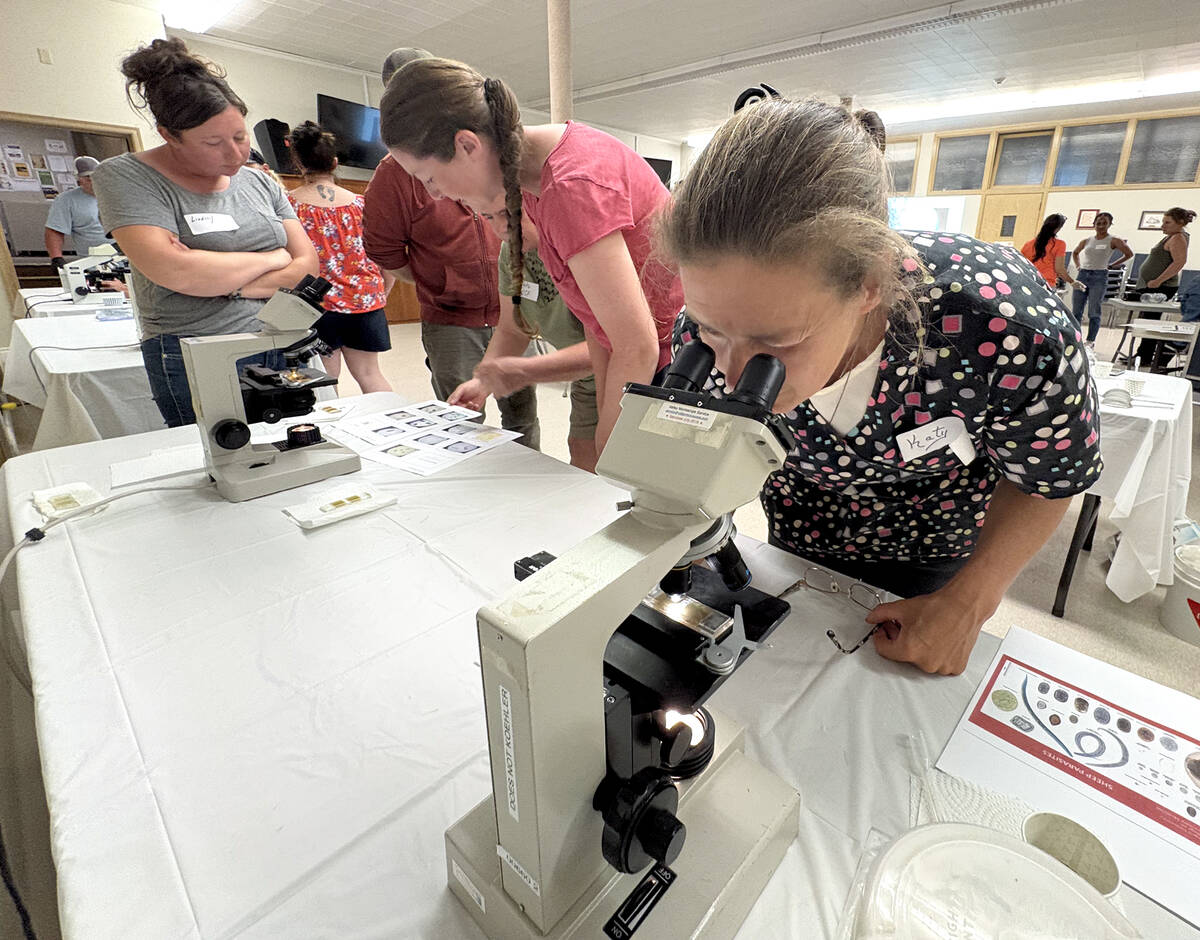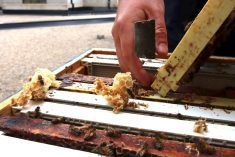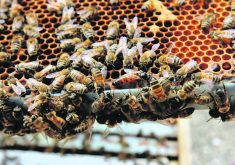Last summer was a honey of a year for Manitoba beekeepers, but strong colonies this spring could mean bee swarms will be an issue this summer.
“Generally the colonies came through the winter better than normal,” said provincial apiarist, Rhéal Lafrenière. “More colonies survived, with less mortality and many beekeepers are reporting good, strong colonies this spring.”
But strong colonies in the spring can cause beehive overcrowding, especially if poor weather keeps all of a colony’s bees in the hive instead of out flying.
Read Also

Smart deworming for sheep starts with individual fecal egg counts
Fecal egg count tests are one step to managing dewormer resistance and managing sheep parasites on Canadian sheep farms to maintain flock health.
Lafrenière notes colonies also build up their numbers in the spring and early summer during the lead-up to honey season, resulting in a very full hive.
“We’re going to have to watch out with how we manage these colonies, because they may actually get stronger earlier than when we normally need them to be… and we’re going to have to be very cautious about swarming,” he said.
Swarming is a natural process, where a large number of bees break away from a parent colony and begin to search for a new home. Swarms will collect in trees or on building corners for a few days, while scout bees go out in search of suitable lodgings.
“Sometimes you can intervene while they are in that process of trying to find their next home, capture them and put them into a box and they will produce,” Lafrenière said.
Swarmed
If you are concerned about a bee swarm that has arrived at your home or farm, the apiarist said you can call Manitoba Agriculture, Food and Rural Initiatives to connect with a local beekeeper who can come and harvest the swarm.
He said swarms captured in May or June have a very good chance of successfully overwintering and may even produce some honey in their first summer.
“But we always encourage people, if the bees are in an area where they won’t be a problem, to just leave them be and the swarm will go on its own,” Lafrenière said.
But as with all agricultural production, the provincial apiarist said weather will be the determining factor for what kind of season beekeepers have and if swarms emerge in larger-than-usual numbers.
“Things could change a lot, there is no crystal ball in agriculture,” he said. “But we do have quite a few of the building blocks for good, strong colonies, peaking a little bit earlier, and if we get some poor weather, we could be seeing a lot of swarms afterwards.”
Those same strong colonies could also produce above-average honey yields, provided there is good flying weather and crops such as canola flower well.
Statistics Canada showed an overall decline in honey production in 2011, with 78.1 million pounds produced nationwide. That number was down 4.8 per cent, or four million pounds from 2010. On average, each colony had a yield of 124 pounds, down from 132 pounds per colony in 2010.
But that trend was bucked in Manitoba, which Lafrenière described as “a bit of an anomaly.”
Manitoba anomaly
Manitoba colonies produced an average of 200 pounds in 2011, up from 2010 and above the province’s usual average of 168 pounds per colony.
“Last year ended up being a very good honey-producing year in Manitoba, the season got started being very, very wet, but… the months of July and August, which is our honey-producing year, we had really perfect flying weather for the bees,” said Lafrenière.
Other provinces were not so lucky.
In Alberta, which accounts for over 40 per cent of Canada’s honey production, yields fell by 13 pounds per colony to 117 pounds according to Statistics Canada.
Saskatchewan also saw a decline in production in 2011 with colonies averaging 177 pounds, compared with 214 pounds per colony in 2010.
However, the provincial apiarist said a staggered planting season, like that seen in Manitoba last year, helps prolong the honey season by giving bees a continued nectar supply.
“People were almost dumbfounded last year, because all they heard about Manitoba in the news was the flooding situation and then almost a drought,” said Lafrenière. “But we just managed to have the right balance between the two. The flooding actually set the stage with ground moisture so crops could continue to produce nectar when it got dry.”


















